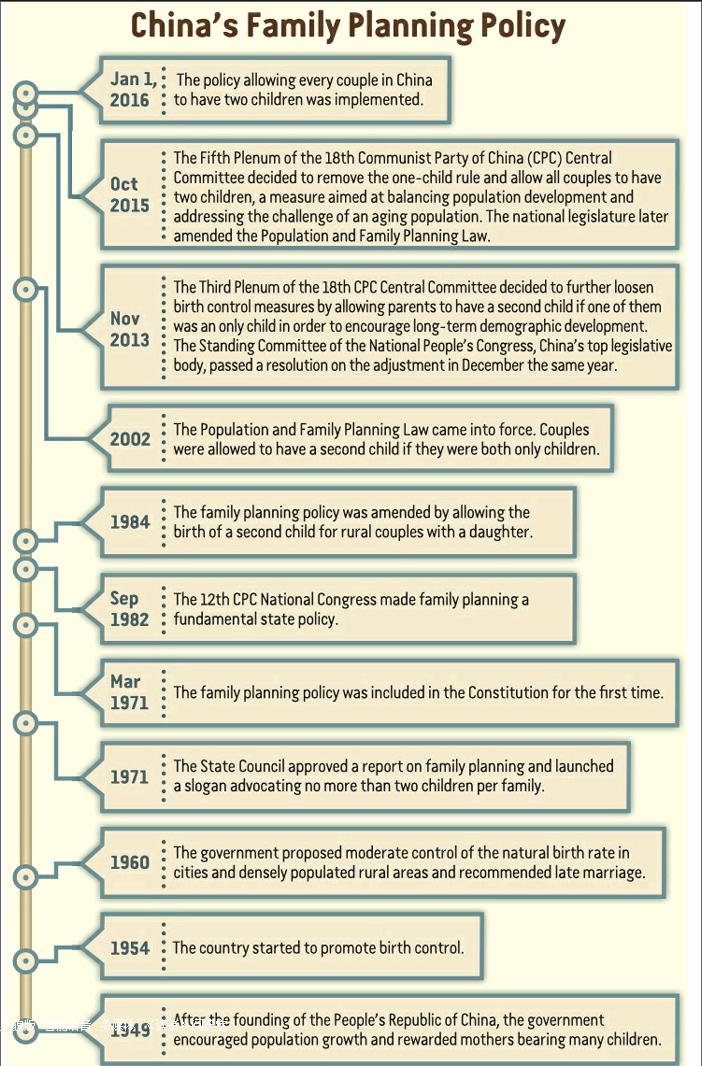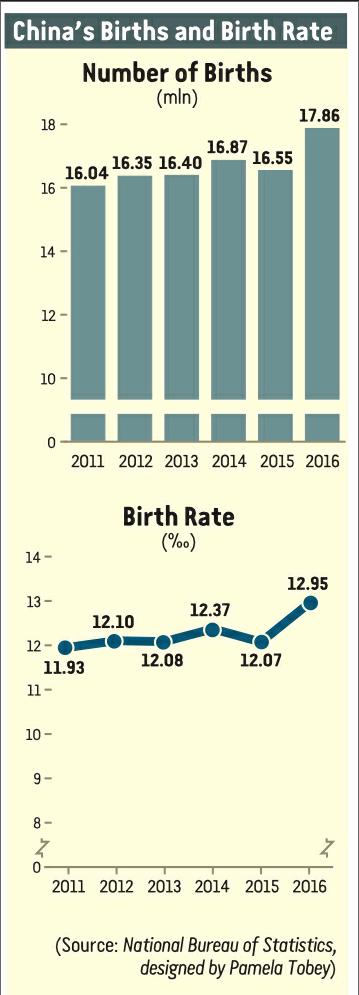A NEW LEASE OF LIFE
2017-04-04ByWangHairong
By+Wang+Hairong


After leaving Beijing for nearly a year, Qiao Shifu, a retired grandfather, was “summoned” back from Shanxi Province to babysit his newborn granddaughter, the second child of his son. Qiao had lived in the capital for more than six years since his first grandchild was born, to take care of the infant. But he disliked the crowded and noisy metropolitan life and hankered for a carefree retired life in his rural home. So one year ago, soon after his grandson entered primary school, Qiao returned to his hometown, thinking his babysitting days were behind him.
But now he is back on duty once again following the implementation of a government policy that allows all couples to have two children, which resulted in the birth of his granddaughter.
Qiaos current duties are more arduous than his previous ones. During the day, he pitches in to care for the newborn whenever needed. On school days, he also needs to take the bus to accompany his grandson to school and pick him up in the afternoon. Because of the second baby, the family has moved into a bigger apartment, which is far from the school.
However, despite the chores, Qiao told Beijing Review he is happy that his family has a new member. His grandson also said he likes having a younger sister.
Policy effect
In October 2015, the Fifth Plenary Session of the 18th Central Committee of the Communist Party of China adopted a new policy that allows every couple to have two children, which is a significant departure from the previous family planning policy and its revisions. The new policy formally took effect nationwide on January 1, 2016, after the national legislature amended the Population and Family Planning Law.
Subsequently, in 2016, hospitals across China reported 18.46 million live births, Yang Wenzhuang, an official with the National Health and Family Planning Commission(NHFPC), said at a press conference on January 22, one year after the policy was implemented. The figure was 11.5 percent higher than in 2015.
Yang also said a sampling survey by the National Bureau of Statistics showed 17.86 million births nationwide last year, the highest since 2000. In the decade from 2003 to 2013, annual births in China had fluctuated around 16 million.
“While the number of women of childbearing age decreased by 5 million, the number of births increased significantly, showing that the family planning policy adjustments were very timely and very effective,” Yang said.
More than 45 percent of the newborns were not first children. Before 2013, the proportion of second children among newborns stayed at around 30 percent, rising in 2014 and 2015 mainly due to policy adjustments. The increase in the number of newborns was significantly more in northeast, north and east China, and in cities.
The increase in the number of newborns accords with the NHFPCs prediction. “During the 13th Five-Year Plan (2016-20) period, 17-20 million births are expected every year,”Yang said. In 2017, the fertility rate and the number of births will increase steadily even though the number of women of child-bearing age will continue to drop. From 2010 to 2015, the number of women of child-bearing age fell by about 3.5 million every year. In the 2016-20 period, the number is expected to decrease by around 5 million annually.
This winter, a couple, both IT professionals working and residing in Beijings Haidian District, welcomed their second child, a boy. The pair, who declined to be named, had wished to have a daughter after their son was born seven years ago. Yet, as each of them has a sibling, they were not eligible to have a second child as an earlier policy relaxation in 2013 said only couples where one parent is a single child can have two children. However, the universal two-child policy came into effect last year and removed the restriction.Now the couple is overjoyed to have another baby, although it is a boy rather than the girl they had hoped for.
In their community, nearly half the children born in the same year as their elder son have a sibling either because of the universal two-child policy or the policy introduced in 2013.
Under the current policy, 90 million couples across China would be eligible to have a second child, Wang Peian, Vice Minister of the NHFPC, said shortly after the policy was announced.
The 2013 policy adjustment, on the other hand, was estimated to make 15-20 million couples nationwide eligible for a second child, said Zhai Zhenwu, Vice President of China Population Association and sociology professor with the Beijing-based Renmin University of China.
Not an easy decision
But not all eligible couples will opt to have a second child. Before the universal two-child policy, demographers had carried out several studies to predict the effect of policy change, including womens willingness to have a second child.
On one hand, policymakers wish the adjustment to the family planning policy will address demographic problems such as falling birth rate, aging population and dwindling working-age population. On the other hand, they do not want the adjustment to lead to another population explosion that would seriously strain natural resources.
“The number of births is affected by many factors, such as the childbirth policy, number of women of child-bearing age, and other social and economic factors such as family income, the availability of childcare services and womens employment conditions,” Yang said.
The China General Social Survey conducted by the Institute of Sociology under the Chinese Academy of Social Sciences in 2015 demonstrated that of families with one or no child, 57.47 percent said they would not have a second child.
A second survey from April to October 2016 by the All-China Womens Federations Department for Children and a research center of Beijing Normal University showed similar results.
Chen Xiaoxia, Director of the Department for Children, revealed that 53.3 percent families with one child did not want a second, 20.5 percent said they would like to, while 26.2 percent were not sure. The respondents worried about the availability and affordability of public services such as education and medical services, as well as family and environmental conditions. These were the major factors preventing families from having a second child.
Yang said some studies show that childrearing cost accounts for nearly half the average income of Chinese families, with education expenses being a major burden.
On the other hand, the survey administered by the All-China Womens Federation also showed that 29.6 percent of ordinary urban families already had a second child, and in rural areas, the percentage was higher.
Families already with two children and one-child families wishing to have a second child said the major reasons for the second child were “family happiness,” “to have a companion for the first child” and “to have both a son and a daughter.”
Some couples eligible for a second child may be too old. Approximately 40 percent of married women in China who are of childbearing age and have one child are older than 40, said Wang Guangzhou, a researcher with the Institute of Population and Labor Economics under the Chinese Academy of Social Sciences.
Follow-up action
In the following four years, the NHFPC will strengthen monitoring the birth population, and continue to track and evaluate the effect of the universal two-child policy, according to the Development Plan for National Family Planning Work During the 13th Five-Year Plan Period released on January 25.
The plan predicts that by 2020, Chinas population will be around 1.42 billion; the annual natural population growth rate will be about 0.6 percent, the total fertility rate will increase to around 1.8 and the male-tofemale ratio at birth will fall below 112:100.
From 2010 to 2015, Chinas annual natural population growth rate stayed around 0.5 percent and the male-to-female ratio at birth dropped from 117.94:100 to 113.51:100. In 2016, the total fertility rate was above 1.7, according to the NHFPC.
In the next four years, the NHFPCs priority is implementing the universal two-child policy effectively. It has said it will safeguard public rights and interests such as maternity leave, and work with other government departments to meet the increasing public need for medical, educational and related services. In addition, it will also promote gender equality to address the abnormal gender ratio at birth.
